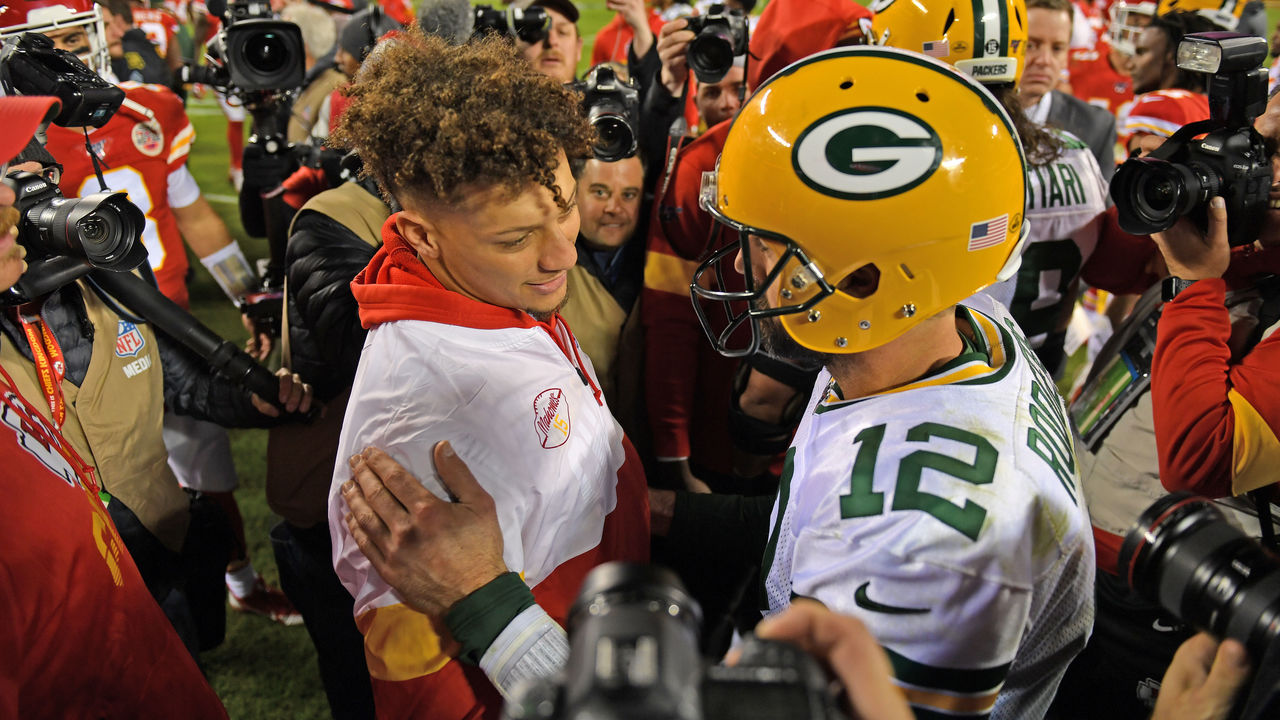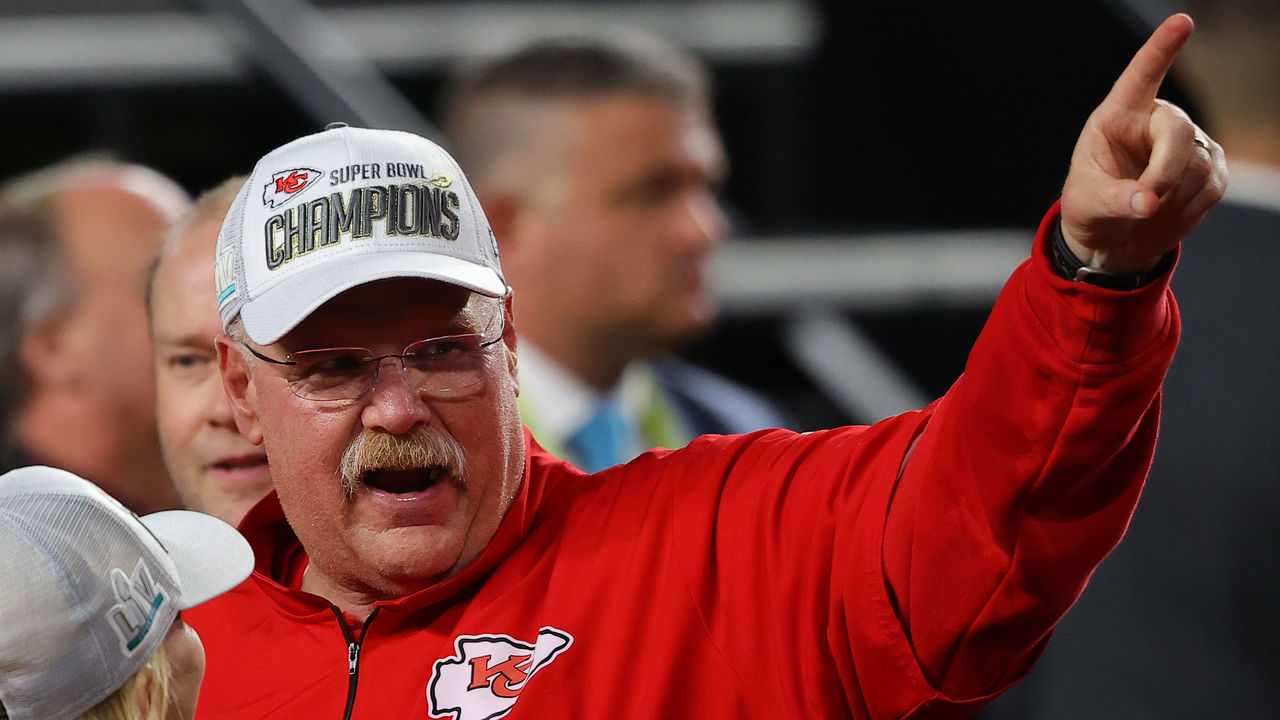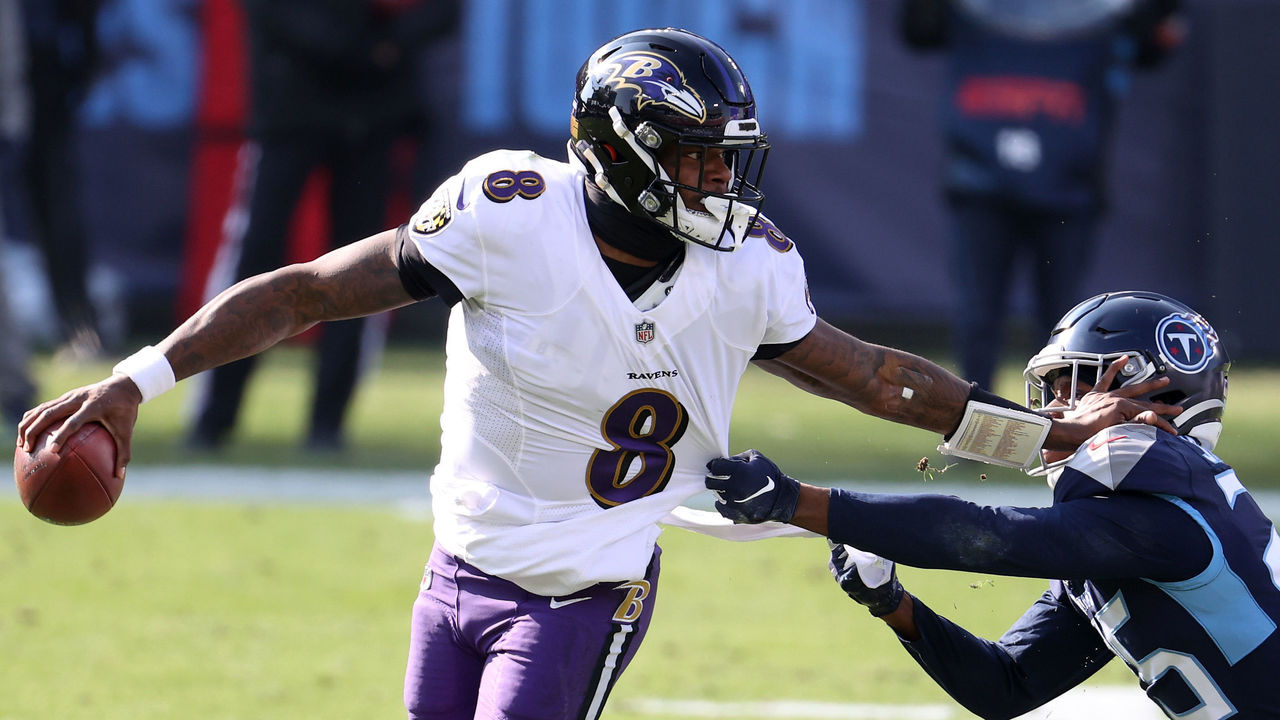How the NFL averted a quarterback crisis
The NFL has always been a quarterback-driven league. Yet five seasons ago, even as the league experienced an unprecedented boom in passing volume, it also faced the possibility of a quarterback crisis.
"As the 2015 NFL season begins," then-Wall Street Journal reporter Kevin Clark wrote, "the league's decision-makers say they are daunted by what they see as a widening gulf between the college game and the pro game, one that has existed for a while but is now starting to affect the quality of the league's most cherished commodity: Quarterbacks."
More than ever, quarterbacks in the 2010s were putting up big numbers, with Clark noting in 2015 that "the five most productive individual passing seasons in history have happened since 2011." But many QBs were increasingly relying on short, quick throws while taking advantage of rule changes designed to protect quarterbacks and pass-catchers - changes that, in turn, hindered defenses.
At the same time, a yawning talent gap developed. While several quarterbacks who entered the league before 2006 were still thriving into the late 2010s and even winning championships, the younger cohort was mostly bereft. Chase Stuart of Football Perspective ran the numbers in 2020, going so far as to dub the group of QBs who turned pro from 2006-15 "the missing generation." It was a period that featured a staggering number of first-round busts, and the best quarterback of that draft era - the Seattle Seahawks' Russell Wilson - had slipped all the way to the third round.
Fast forward to 2021. Remarkably, oldsters like Drew Brees, Philip Rivers, and Ben Roethlisberger all led their teams to the playoffs once again, though Rivers just retired while Brees and Roethlisberger have noticeably declined. Tom Brady of the Tampa Bay Buccaneers (drafted in 2000) and Aaron Rodgers of the Green Bay Packers (2005) are still here, though, and they're set to meet Sunday in the NFC Championship Game.

But the AFC title matchup between the Buffalo Bills and Kansas City Chiefs features Josh Allen (2018) and Patrick Mahomes (2017), providing a stark reminder that the NFL is now stocked with a solid core of young quarterbacks. The QB crisis has been averted, and the future of the position is in good hands, in large part because coaches and front offices have adapted.
For far too long, NFL decision-makers were wedded to the idea that quarterbacks had to primarily operate from the pocket or play in a "pro-style" offense instead of the spread systems that were proliferating at the lower levels. There were occasional exceptions over the years, with certain mad scientists allowing dual threats like Fran Tarkenton, Randall Cunningham, Kordell Stewart, Robert Griffin III, and Colin Kaepernick to play a more wide-open game. But these experiments were often quickly abandoned or dismissed as finesse or gimmickry. The stubborn thinking at the pro level was that football had to be about brawn and power.
"According to coaches, general managers, and players I spoke to over the course of training camp, teams spend too much time on what the offense looks like and far too little on how the quarterback is processing it," Clark wrote for The Ringer in a 2017 piece about the NFL's collectively declining ability to evaluate QBs.
More than any other coach, the Chiefs' Andy Reid changed this kind of thinking. It was Reid who figured out how to make do with the sort of offensive player the game's lower levels were producing, as opposed to trying to pigeonhole those players into "pro-style" systems. If college QBs are playing the spread, Reid's thinking went, why shouldn't we incorporate the spread into what we do?

Reid had long been a tinkerer and an innovator who looked to the college game for inspiration. But he leaned fully into adapting his thinking in 2017 when the Chiefs decided to trade up from No. 27 to No. 10 to draft Mahomes. The draft consensus was that Mahomes had boom-or-bust potential and would likely be selected toward the end of the first round. The Chiefs saw something other teams didn't.
Kansas City already had Alex Smith, but then-co-director of player personnel and current general manager Brett Veach had become smitten with Mahomes. And so a plan was hatched to trade up and get him, as Jayson Jenks, Dan Pompei, Mike Sando, and Nate Taylor of The Athletic detailed this week. Mahomes sat behind Smith that first season, but Reid signaled to the world in the 2017 season opener his willingness to adapt. He rolled out a game plan heavy on college concepts: at-the-snap motion, jet sweeps, read-options, and myriad wide-open formations, including the pistol. Kansas City, behind Smith, steamrolled the mighty New England Patriots 42-27. A new day had dawned in the NFL.
It was also in 2017 that wunderkind head coach Sean McVay took over the Los Angeles Rams and inherited quarterback Jared Goff. The No. 1 pick of the 2016 draft had endured a rookie season under the stodgy Jeff Fisher that had put him on a path to become just another draft bust. But McVay tailored his offense to Goff's strengths as an accurate passer, relying heavily on play-action, motion, and run-pass options while getting Goff out of the pocket by design. Goff would reinvent himself, and the Rams made the playoffs.

But it wasn't just the Chiefs and Rams. Beginning in 2017, coaches around the league stopped fretting about the hands they were dealt - which included collectively bargained limitations on padded practices and on offseason practice time - to instead work with what they had. That season's Super Bowl saw the Philadelphia Eagles upset the Patriots 41-33 in what looked like a video game.
The Chiefs handed Mahomes the keys to their offense in 2018; he promptly went on to become league MVP, and a year later, he won the Super Bowl. Sunday will mark his third straight AFC Championship Game appearance, all at home. His potential seems limitless.
Allen, meanwhile, looked like a missed opportunity for the Bills during his first two seasons. He was a big-armed quarterback with accuracy issues and the potential to make game-breaking mistakes - exactly the kind of QB who traditionally struggled to adjust in the pros. But the Bills went all-in on Allen by trading for star wideout Stefon Diggs, and offensive coordinator Brian Daboll - a journeyman who's bounced around the NFL's coaching ranks - cooked up a system that exploits Allen's scrambling ability while also scheming him into easy throws. It should be noted, as The Athletic's Robert Mays recently wrote, that Daboll's own evolution as a play-designer and play-caller really took root after he spent the 2017 season working with Nick Saban at Alabama.
Lamar Jackson, selected with the final first-round pick of the 2018 draft, has guided the Baltimore Ravens to the playoffs in all three of his pro seasons, and in 2019 he was named league MVP. Kyler Murray, Joe Burrow, and Justin Herbert have all displayed high-ceiling ability, too.

Baker Mayfield, the No. 1 overall pick in 2018, flashed as a rookie before getting caught in the Cleveland Browns' maw of suck a year later. But the Browns got things right by hiring head coach Kevin Stefanski this season, and Cleveland won a playoff game for the first time in 26 years.
The Tennessee Titans' Ryan Tannehill seemed like another lost first-rounder of that 2006-15 era during his early years with the Miami Dolphins. But under the forward-thinking tutelage of offensive coordinator Arthur Smith, Tannehill reinvented himself into one of the league's most efficient passers. He led the Titans to last year's AFC Championship Game and an AFC South title this season.
Though they both missed this year's postseason for decidedly different reasons, the Dallas Cowboys' Dak Prescott - a fourth-round pick in 2016 - and the Houston Texans' Deshaun Watson have both shown the ability to be franchise quarterbacks. Prescott led Dallas to the playoffs twice and was putting up huge numbers in 2020 before breaking his ankle in Week 5. Watson had a phenomenal 2020 season, but he's in a terribly dysfunctional situation in Houston. It's stunting his chances to win in his prime - further proof that sometimes the problem isn't the quarterback but rather a team's decision-makers.
And then there's Rodgers. Though he's long been perhaps the league's most gifted all-around quarterback, Rodgers and the Packers often underachieved in the decade following their Super Bowl XLV win. But in the two seasons since head coach Matt LaFleur arrived with an offense heavy on motion, play-action, and other bells and whistles, Rodgers, too, has reinvented himself. At age 37, he remains an unstoppable force, and the Packers are in the NFC title game for the second year in a row.
Brady? You know about him and how he chose to leave New England for Tampa Bay - in no small part because of the Buccaneers' collection of talented skill players. Tampa's coaching staff wants him to take aggressive shots downfield while also trusting him to know when to rein things in and play it safe. Brady, 43, is under contract for another year. He'll probably still be here to challenge the next generation, too.
Dom Cosentino is a senior features writer at theScore.